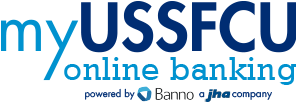Small Business SEO Checklist
Published: March 11, 2019
Search Engine Optimization. What can we do today to help improve our rankings?
SEO isn’t easy for any company. But SEO is especially complicated when you have limited time, money, and other resources like many small business owners do. Great organic rankings don’t happen overnight. However, there are some things you can focus on to start moving the needle for your small businesses. The following SEO checklist for small businesses will help you prioritize SEO tasks.
Nail Down What Problems You Solve For Customers. Before jumping into SEO, you must first understand the nature of what your small business provides to your customers. For example: How, when, and where do customers determine they need your product or service? Is it away from home, using their cell phone? Is it at home using a desktop computer or tablet? Is it driven by a personal desire, like good food to eat or a great place to spend some time? Or is it caused by a disruptive event like a home or personal issue? These questions color the language your customers will use to find your business. This information will drive your keyword research and content creation, among other tasks.
Fix Your Technical SEO Issues. Your small business website might look fine on the outside – with great graphics, colors, and fonts. But if there are technical problems “under the hood,” it will likely impact your rankings and traffic. Before embarking on a content or link campaign, spend time fixing the foundation.
You need a solid website structure so search engines can properly crawl and index your webpages. Some of the most common technical SEO problems have to do with: Speed, Duplicate content, Broken links, Improper use of canonical link elements and Un-optimized pages. For more information on how to audit a website, read The Ultimate SEO Audit Checklist.
Optimize Your Pages. Onpage optimization is more than just putting keywords on the page. You must develop quality content that is properly structured using natural characteristics for the targeted keywords. Use every reasonable opportunity to add your targeted keywords appropriately on your website. Otherwise, you’re missing important ranking signals. In other words, you must optimize your Titles, Meta descriptions and body content. For more information about onpage optimization, read Why Keywords Are Still So Very Important for SEO.
Optimize Google My Business. Google My Business should be a focal point for any small business. It’s free, easy to update, and can make a big impact. The first step toward optimizing your Google My Business listing is claiming and verifying it https://www.google.com/business. Be sure to fill out as many fields as you can and include photos and videos to enhance your listing. Your category selection is super important. Be sure to choose the correct categories for your business.
If you want to get more advanced with Google My Business, take the time to create questions and answers. What does that mean? In local search results, there is now a section where people can ask questions and get answers. As a small business, it is important that you stay on top of these questions. Create your own questions and provide the answers.
Mike Blumenthal wrote a great guide about these Q&As, which is worth the read: The Big Guide to Google Questions And Answers (Q & A).
Manage Local Business Listings & Citations. In addition to Google My Business, you need to control the accuracy of your local business data. Consistency is crucial. Data aggregators (e.g., Neustar Localeze, Factual) share information about local businesses, including the name, address, and phone number (NAP). Make sure your business’s NAP information is consistent and accurate. Local business listings and citations (i.e., online mentions of a business) can help improve your local presence. The best approach to local directories and citations is to sign up for a service that will distribute your business NAP information.
Focus on Getting Reviews. Even kids are conditioned to look up reviews before making a purchase. Reviews were one of the leading local search ranking factors in 2017, according to Local SEO Guide. Plus, you can improve your conversions by putting effort into getting reviews and feedback from your customers. Platforms can help you organize and manage a review campaign. Or, you can simply encourage customers to leave reviews on the major online review sites.
Mix Paid with Organic to Get Going. If you’re just starting out with SEO, it can take a while to see results. SEO is a great long-term play, but sometimes you need to start generating leads right away. That is where paid search can really help. While you are building up your SEO work, set aside a budget for paid, so that you can keep the leads coming in. Even after you have a steady flow of organic traffic to the website, you might still consider running a paid search campaign in conjunction. Read more about local paid search 10 Tips to Get More Local Customers from AdWords & Facebook Ads.
Summary. This list is a consolidated version of what you can tackle to improve your rankings. Even if the list seems daunting, the important thing is to just do something. Set goals you know you can accomplish and start working your way down the list. If you get stuck, there are enough online resources to help point you in the right direction.
This article originally appeared on Search Engine Journal.



